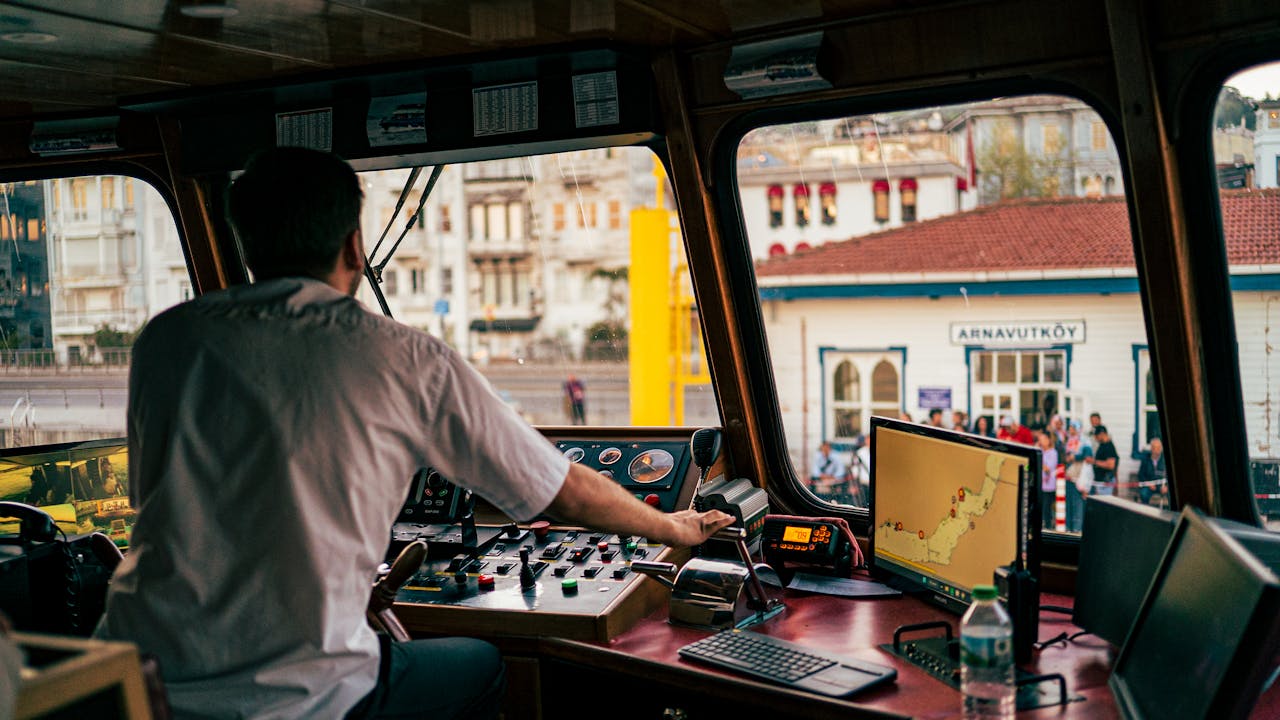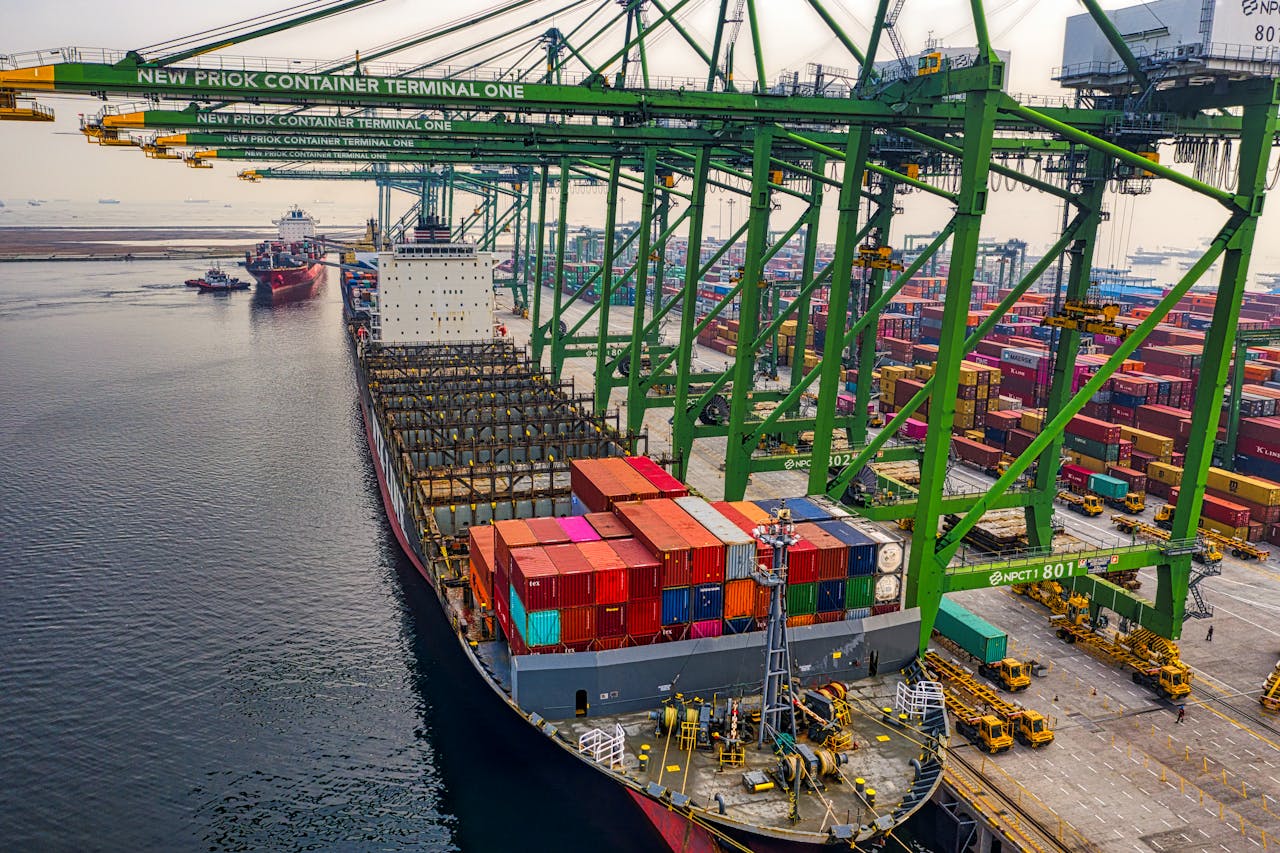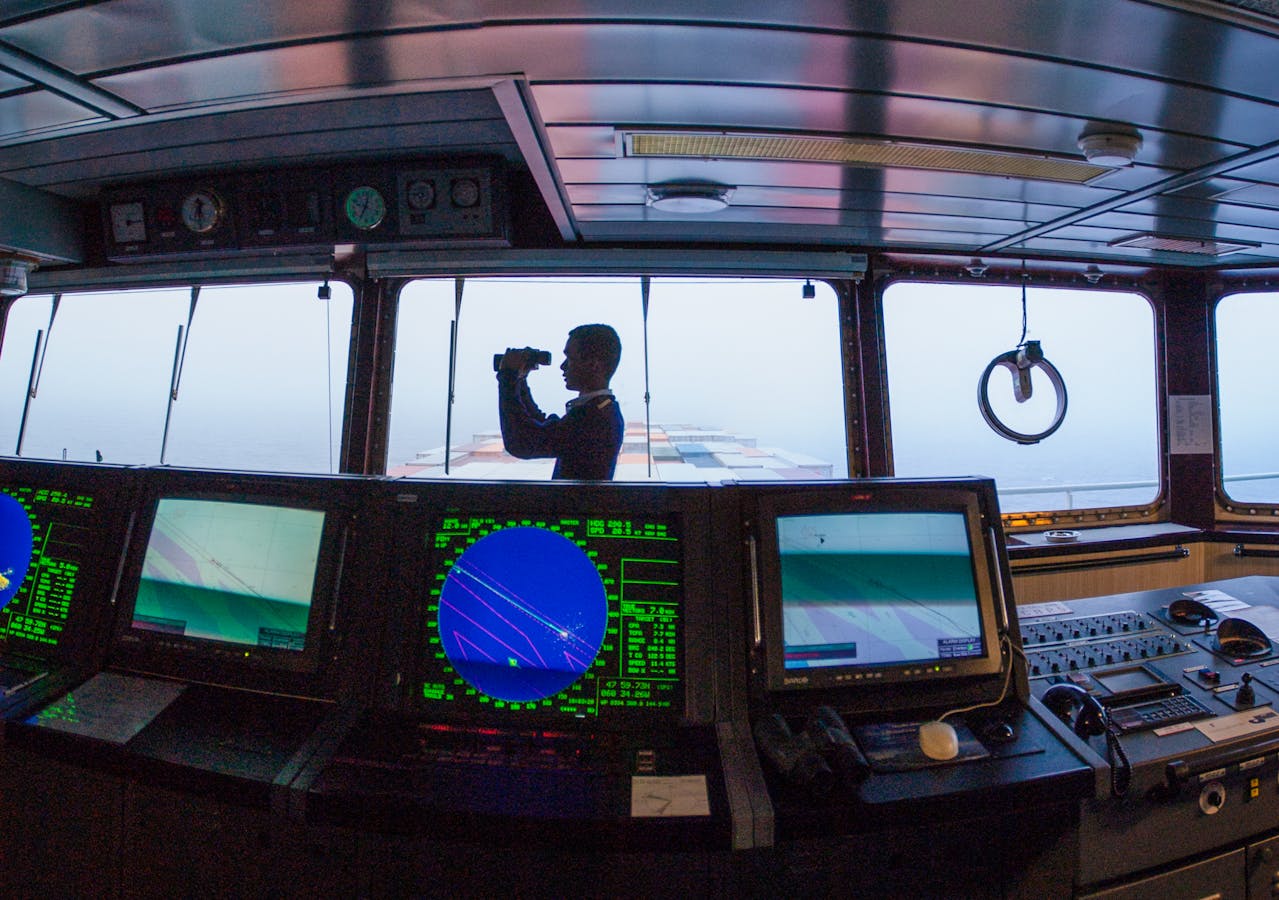Global trade thrives on the heartbeat of bustling ports. For centuries, these hubs have connected nations, but today, a quiet revolution is unfolding. Advanced tools and systems are redefining how cargo flows, ensuring smoother operations and greener outcomes.
The shift towards digital solutions isn’t just a trend, it’s a necessity. Traditional manual processes struggle to keep pace with surging trade volumes. Modern ports now rely on interconnected platforms, automating everything from logistics tracking to emissions monitoring. Major hubs like Rotterdam and Singapore showcase this evolution, blending artificial intelligence with real-time data to cut delays and boost safety.
Collaboration remains central to this transformation. Shipping companies, governments, and tech providers work hand-in-hand to build trust and streamline workflows. This partnership-driven approach ensures innovations meet real-world demands, from reducing congestion to enhancing sustainability.
In this article, we’ll unpack the tools driving this change, explore real-world successes, and discuss what lies ahead. The future of global commerce depends on ports embracing smarter, faster, and more resilient strategies.
Key Takeaways
- Ports worldwide are prioritising digital solutions to handle increasing trade demands efficiently.
- Smart systems replace outdated methods, improving accuracy in logistics and environmental monitoring.
- Leading ports demonstrate measurable gains in efficiency through automation and data analytics.
- Stakeholder collaboration is critical for implementing scalable, future-ready infrastructure.
- Sustainability and operational resilience are now central to modern port strategies.

Understanding the Digital Transformation of Port Management
Ports are evolving from cluttered paperwork to sleek digital dashboards. Gone are the days of clipboards and manual logs, today’s hubs thrive on interconnected systems that automate workflows and reduce delays. Let’s explore how this shift reshapes port operations and strengthens global trade networks.
From Traditional Methods to Digital Ecosystems
Decades ago, cargo handling relied on phone calls, spreadsheets, and physical inspections. Now, smart sensors and cloud platforms track shipments in real time. The Port of Barcelona, for instance, cut processing times by 40% using IoT-enabled systems. Automated cranes and AI-driven scheduling minimise human error, while blockchain ensures transparent documentation.
Enhancing Supply Chain and Port Operations
Real-time data transforms how ports collaborate with logistics partners. Live updates on vessel arrivals or container statuses let teams adjust plans instantly. This visibility slashes wait times and fuel costs. One study showed digital processes boosted cargo throughput by 22% in major US hubs.
| Process | Traditional Approach | Digital Solution |
|---|---|---|
| Cargo Tracking | Manual logs | GPS & RFID tags |
| Documentation | Paper bills | Blockchain records |
| Equipment Maintenance | Reactive repairs | Predictive analytics |
These upgrades aren’t just about speed, they build resilience. When storms disrupt schedules, adaptive systems reroute shipments seamlessly. By prioritising digital processes, ports future-proof their operations while keeping goods moving smoothly.
How Technology Is Changing Port Management Practices
The maritime industry’s heartbeat now syncs with algorithms and sensors, not just tides. Over the years, smart systems have evolved from experimental tools to core components of daily workflows. Let’s explore the trends redefining what modern hubs can achieve.
Key Trends Shaping Modern Port Operations
Predictive maintenance stands out as a game-changer. Sensors on cranes and cargo handlers analyse wear patterns, scheduling repairs before breakdowns occur. The Port of Hamburg, for example, reduced equipment downtime by 35% using this approach.
Real-time monitoring now drives traffic management. Advanced analytics process data from GPS trackers and IoT devices, optimising vessel routes and berth allocations. This slashes congestion while improving fuel efficiency, a win for both operations and sustainability goals.
Automation’s role continues to expand. Automated guided vehicles (AGVs) at smart ports work round-the-clock, moving containers with pinpoint accuracy. Machine learning models even predict shipment delays by analysing weather patterns and historical data.
These innovations didn’t emerge overnight. Decades of incremental upgrades have paved the way for today’s interconnected models. What began as basic digitisation now delivers end-to-end visibility, letting teams make smarter decisions faster.

Advancements in Automation and AI in Port Operations
Modern ports are embracing intelligent systems to tackle growing demands. From self-driving cranes to algorithms that predict equipment failures, these innovations tackle inefficiencies head-on. Let’s see how automation and smart models reshape workflows while keeping goods flowing smoothly.
Predictive Maintenance and Traffic Optimisation
Imagine knowing a crane needs repairs before it breaks. Sensors embedded in machinery analyse vibrations and temperatures, flagging issues early. Rotterdam’s port uses this approach, slashing downtime by 30% while optimising handling schedules. AI-driven traffic management tools also reroute lorries in real time, dodging bottlenecks.
| Process | Traditional Approach | AI-Driven Approach |
|---|---|---|
| Equipment Checks | Manual inspections | Sensor-based predictions |
| Traffic Control | Fixed schedules | Real-time analytics |
| Ship Scheduling | Spreadsheet planning | Machine learning models |
Case Studies: Rotterdam, Los Angeles and Singapore
Rotterdam’s automated guided vehicles (AGVs) now shift containers 24/7, guided by data from 10,000+ IoT devices. Los Angeles reduced congestion by 18% using AI-powered berth scheduling, syncing ship arrivals with warehouse capacity.
Singapore’s port employs machine learning to forecast delays caused by monsoons. Their system adjusts vessel routes instantly, cutting average wait times by 25%. These examples prove that when companies invest in smart analytics, everyone benefits, from dockworkers to global supply chains.
Leveraging IoT and Data Analytics for Enhanced Efficiency
In today’s ports, data streams pulse through every crane, container, and conveyor belt. IoT devices now form the backbone of operations, offering insights that were unimaginable a decade ago. By merging real-time tracking with predictive analytics, ports achieve smarter workflows that benefit everyone from dockworkers to global business partners.
Real-Time Data Tracking and Predictive Insights
Sensors embedded in cargo and equipment monitor everything from temperature to location. This constant flow of data lets ports anticipate bottlenecks before they occur. For example, the Port of Antwerp uses IoT-enabled tags to track shipments, reducing delays by 20% during peak seasons.
Advanced analytics platforms process this information, spotting patterns humans might miss. Predictive models forecast equipment failures or weather disruptions, allowing teams to reroute shipments proactively. Long Beach recently slashed wait times by 15% using such systems.
Interconnected systems also streamline logistics across supply chains. When a vessel arrives late, automated alerts adjust truck schedules and warehouse staffing. This agility cuts costs while boosting efficiency for companies relying on just-in-time deliveries.
Transparency improves, too. Shipping lines and clients access live updates via shared dashboards, building trust through visibility. These innovations don’t just keep goods moving, they redefine how ports use information to stay ahead in a fast-paced industry.

Innovative Inventions and Sustainable Practices in Port Management
Sustainability now drives port innovation. As environmental regulations tighten, hubs worldwide adopt cleaner methods without sacrificing efficiency. This shift merges eco-conscious processes with smart infrastructure, proving green solutions can coexist with thriving business operations.
Green Technologies and Shore Power Solutions
Shore power systems let docked ships plug into land-based electricity, cutting engine emissions by up to 80%. Los Angeles pioneered this approach, reducing annual CO₂ output by 3,000 tonnes. Their shipping partners now prioritise berths offering this feature, creating a ripple effect across supply chains.
Energy-Efficient Cranes and Waste-to-Energy Systems
Hybrid cranes at Rotterdam’s port recover kinetic energy during lowering, slashing fuel use by 40%. Meanwhile, Singapore converts 15,000 tonnes of annual container waste into electricity through gasification plants. These inventions prove that smart technology tackles both environmental and operational challenges.
Ports embracing such digital transformation strategies see dual benefits: lower carbon footprints and leaner management costs. Hamburg, for instance, saved €2.3 million yearly by optimising equipment maintenance cycles. As these practices spread, they redefine what modern port management can achieve, cleaner, quicker, and more cost-effective for all.
International Collaboration and Public-Private Partnerships in Ports
Global commerce relies on partnerships as much as infrastructure. While tech drives progress, stakeholders across nations must align strategies to keep goods flowing. This cooperation bridges gaps between policy-makers, business leaders, and logistics experts.
Building Trusted Networks Across Borders
Shared standards simplify complex chain management. When ports adopt interoperable systems, cargo moves seamlessly between hubs. The EU’s Port Collaborative Decision Making initiative, for example, cut vessel waiting times by 17% through real-time data sharing.
Public-private models accelerate innovation. Singapore’s Maritime and Port Authority partnered with IBM to develop a blockchain platform for document handling. This slashed processing from five days to 24 hours while boosting transparency.
| Region | Initiative | Outcome |
|---|---|---|
| Europe | Port Community Systems | 30% faster customs clearance |
| Asia-Pacific | Cross-border data protocols | 15% reduction in paperwork |
| Americas | Joint cybersecurity frameworks | 40% fewer IT breaches |
These efforts prove that unified approaches tackle global logistics challenges. When governments and businesses co-invest in port upgrades, everyone benefits, from dockworkers to end consumers.

Enhancing Security and Resilience Through Technology
Security now ranks among the highest priorities for modern ports. As threats grow more sophisticated, systems combining physical safeguards with digital vigilance redefine protection standards. These innovations don’t just react to dangers, they anticipate them.
Advanced Monitoring and Cybersecurity Measures
Ports now deploy sensor networks that scan for anomalies 24/7. Rotterdam’s infrastructure, for instance, uses thermal cameras and AI to detect unauthorised movements in restricted zones. When paired with cybersecurity frameworks, these sensors create layered defences against both physical and digital breaches.
Los Angeles recently implemented multi-drone patrols that relay data to control centres in real time. This approach cut response times by 40% during security incidents. Automated alerts ensure teams address threats before they escalate.
Integrating Biometric Access and Smart Surveillance
Biometric scanners now replace traditional ID checks at many ports. Singapore’s facial recognition systems verify worker identities in seconds while logging entry times. Combined with smart CCTV that flags unusual behaviour, these tools enhance safety without slowing operations.
| Security Aspect | Traditional Approach | Tech-Driven Solution |
|---|---|---|
| Access Control | Manual ID checks | Biometric authentication |
| Surveillance | Static cameras | AI-powered anomaly detection |
| Threat Detection | Reactive patrols | Predictive analytics |
Transparent handling of security alerts builds trust across supply chains. When Hamburg’s port introduced shared threat dashboards, partners reported 30% fewer delays. This use of open communication reduces congestion caused by security hold-ups.
By blending human expertise with smart systems, ports create environments where safety and efficiency coexist. The result? Faster turnarounds, fewer disruptions, and operations ready for whatever challenges emerge.
Conclusion
The digital tide reshaping global trade flows far beyond docks and cranes. Over the past decade, automation and smart models have redefined what ports can achieve, slashing congestion, boosting transparency, and cutting operational costs by millions annually.
From predictive scheduling to AI-driven chain management, these innovations prove their worth daily. Rotterdam’s energy-saving cranes and Singapore’s weather-adaptive systems show how infrastructure evolves when business priorities align with tech capabilities.
The road ahead demands sustained collaboration. As trade volumes grow, companies and governments must co-invest in interoperable processes. Shared data platforms and cybersecurity frameworks will keep goods moving safely across borders.
Human expertise remains vital. Even the smartest machine can’t replicate seasoned operators’ problem-solving during crises. By blending cutting-edge tools with workforce training, ports build resilience for coming years.
One truth emerges: ports embracing this future thrive. Those prioritising agile processes and green chain solutions will lead global commerce’s next chapter. The journey has just begun.



